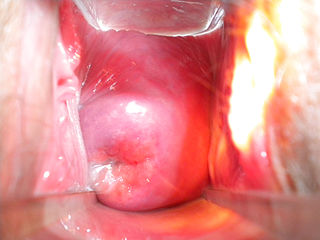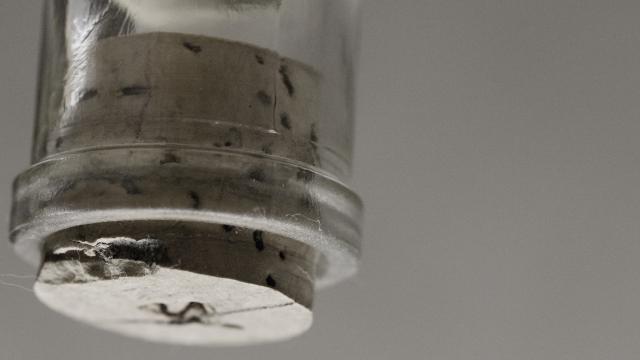Technically, the cervix is the bottom chunk of the uterus, a circular plug-like mass of tissue dividing the uterine space from the vagina. But where most of the uterine wall is made of smooth muscle, up to 90 per cent of the cervix is built of stiff and unyielding connective tissue. At least, it’s stiff most of the time.
During pregnancy and childbirth it undergoes a remarkable transformation that lets it stretch and stretch and stretch.
Stiff 99.9 per cent of the Time

Vagina-side photos of a non-pregnant cervix typically expose what looks like a pink dome with a distinct central slit. That slit — the external os — opens into a narrow folded canal through the center of the cervix. Another opening — the internal os — connects the canal to the inside of the uterus. The canal is lined with cells that respond to changing hormones to secrete mucus with just the right consistency to let menstrual fluids out or make it easier for sperm to get in.
Under that thin layer of cells, the rest of the cervix is all about resisting expansion. Much of its bulk contains a network of linked collagen fibres, which are arranged in three distinct layers around its central channel like a bulls-eye. The thickest, middlemost layer has fibres arranged in rings around the central canal; it’s sandwiched between layers with fibres running parallel to the canal and the outer wall of the uterus.
Nothing is going to pull that open easily. The material — collagen — is a protein as strong, by weight, as stainless steel. The arrangement of the fibres and the crosslinks between them makes the tissue stiff and unyielding. And that’s how it stays most of the time. But like the lining of the cervical canal, the connective tissue is also listening for hormonal messages. And when the hormones say “we’re pregnant!”, the wall of the cervix will start, slowly, to change.
Pregnancy Softens Things Up
By the time that little blue line shows up on a pregnancy test, hormones have started to shift the underlying organisation of the cervical tissue. The cervix builds even more collagen fibres, but the links between the fibres gradually break down, which allows them to shift position and slide relative to one another. More open space between the fibres also lets more water leak into the tissue, where it’s absorbed by water-loving molecules among the collagen fibres. As those molecules grow larger, they help push the collagen fibres even further apart and make the cervix softer and more pliable.
Although it softens during pregnancy, the additional mass of water thickens the cervix and helps keep it sealed to protect the developing foetus. A pregnant cervix resists a suite of new forces: the growing compressive weight of the foetus and the fluid in its amniotic sac, as well as tension from the uterine wall as it stretches and occasionally contracts. Near delivery, these forces are concentrated on the area around the internal os of the cervix and slowly remold the tissue to make it wider and flatter.
Opening for a Baby’s Debut
At term, the cervical tissue is far softer and more pliable than its non-pregnant state, and primed to respond to a new set of dynamic forces — the regular uterine contractions of labour.
We still don’t know all of the details that explain how uterine contractions expand the cervix from practically closed to 10 cm across. During labour, cervical tissue gets even sloppier as cells embedded in the tissue release hyaluronic acid: a molecule that absorbs water, making the tissue even wetter and softer, and pushing its collagen fibres further apart. So when smooth muscle in the uterus contracts and pulls on the cervix, the collagen is no longer in a position to resist those forces. Instead, the structural fibres can slide freely past one another, letting the cervix deform step by step.
[Dobson 1988 | Chiriboga et al 1997 | Ludmir and Sehdev 2000 [Suh et al. 2003 [Lin et al. 2003 [Jorge et al 2014 [Myers et al. 2015 ]]
Top image by Loowgren via Flickr [CC BY 2.0; cervix by Hic et nunc via Wikimedia]
